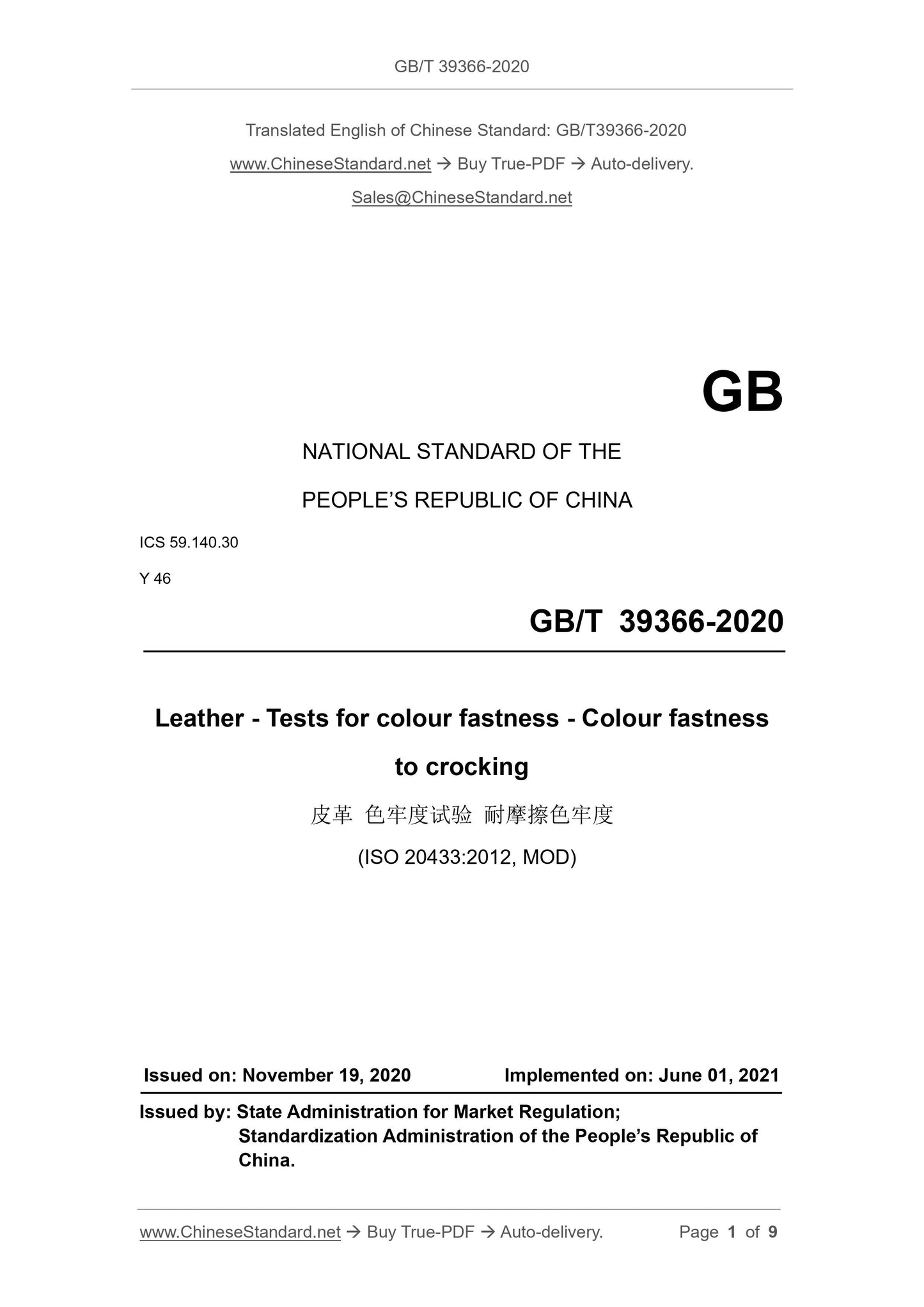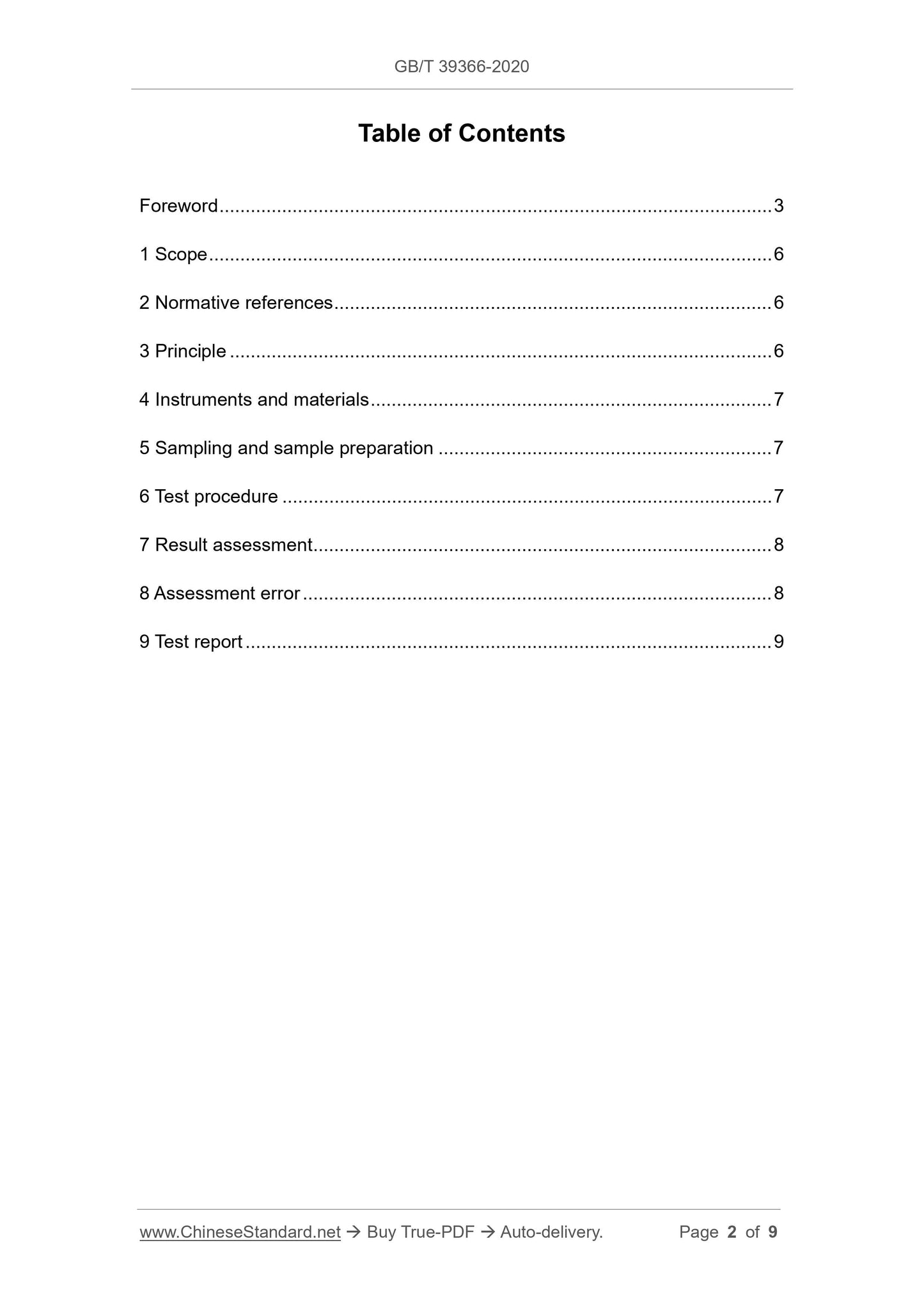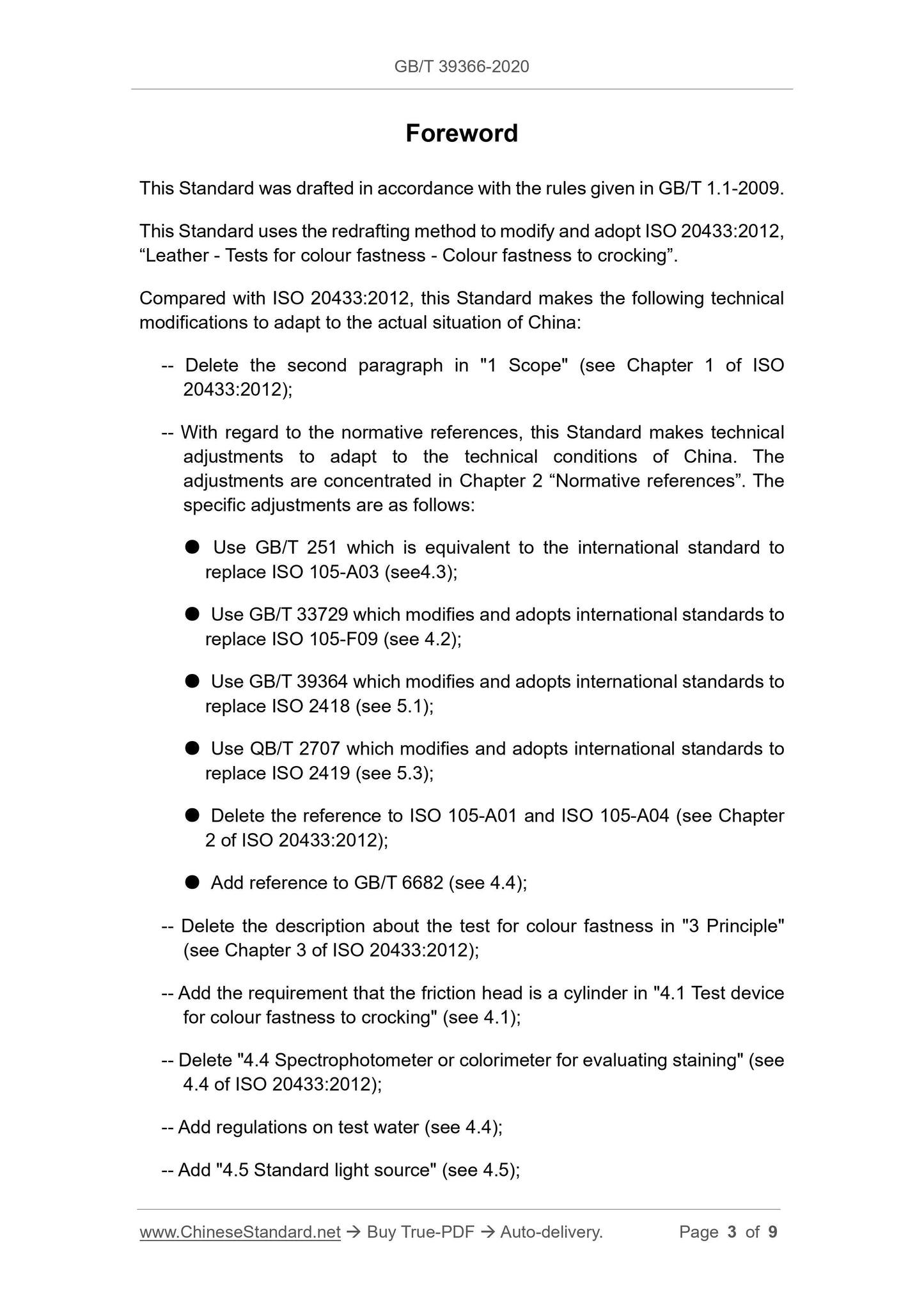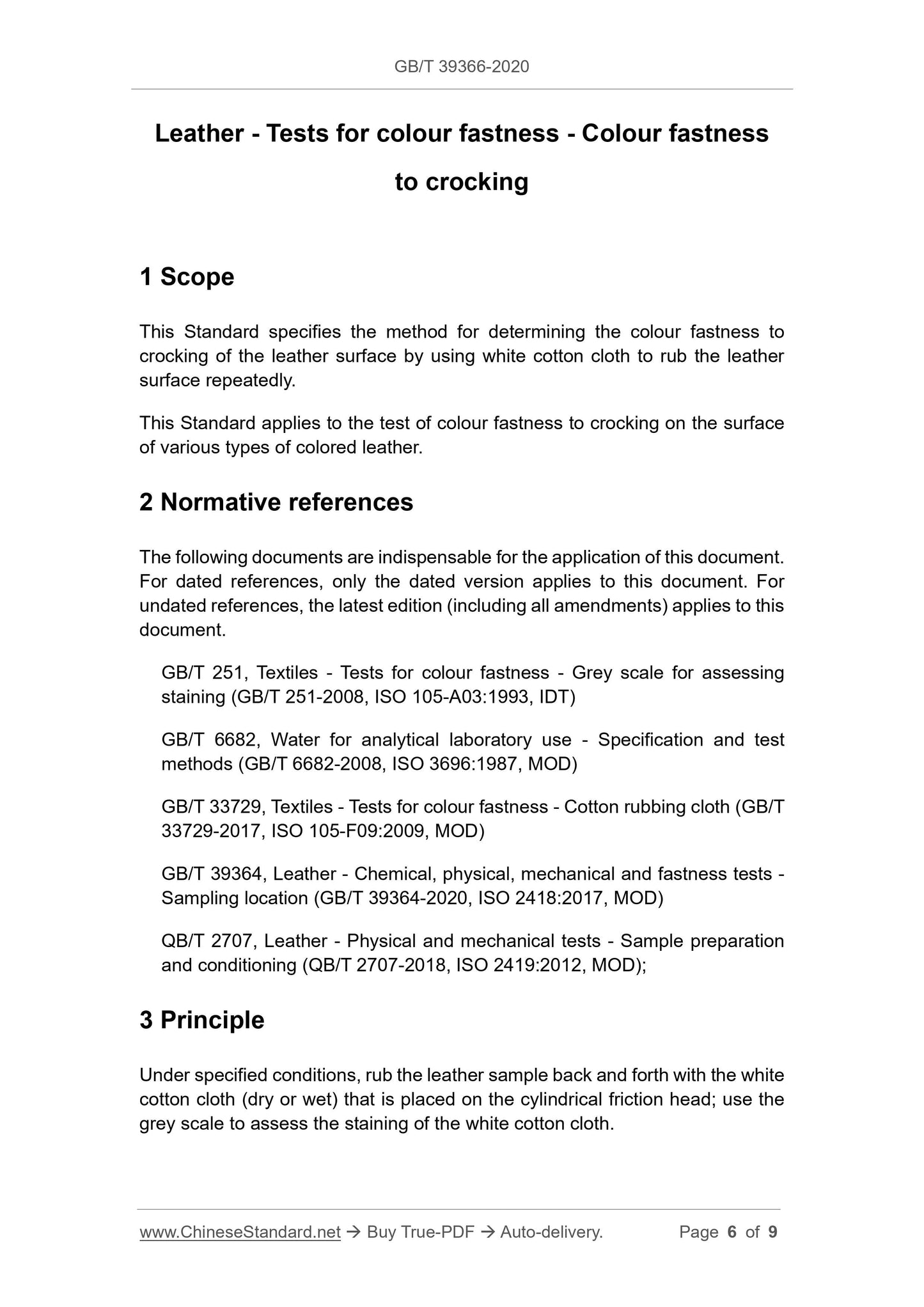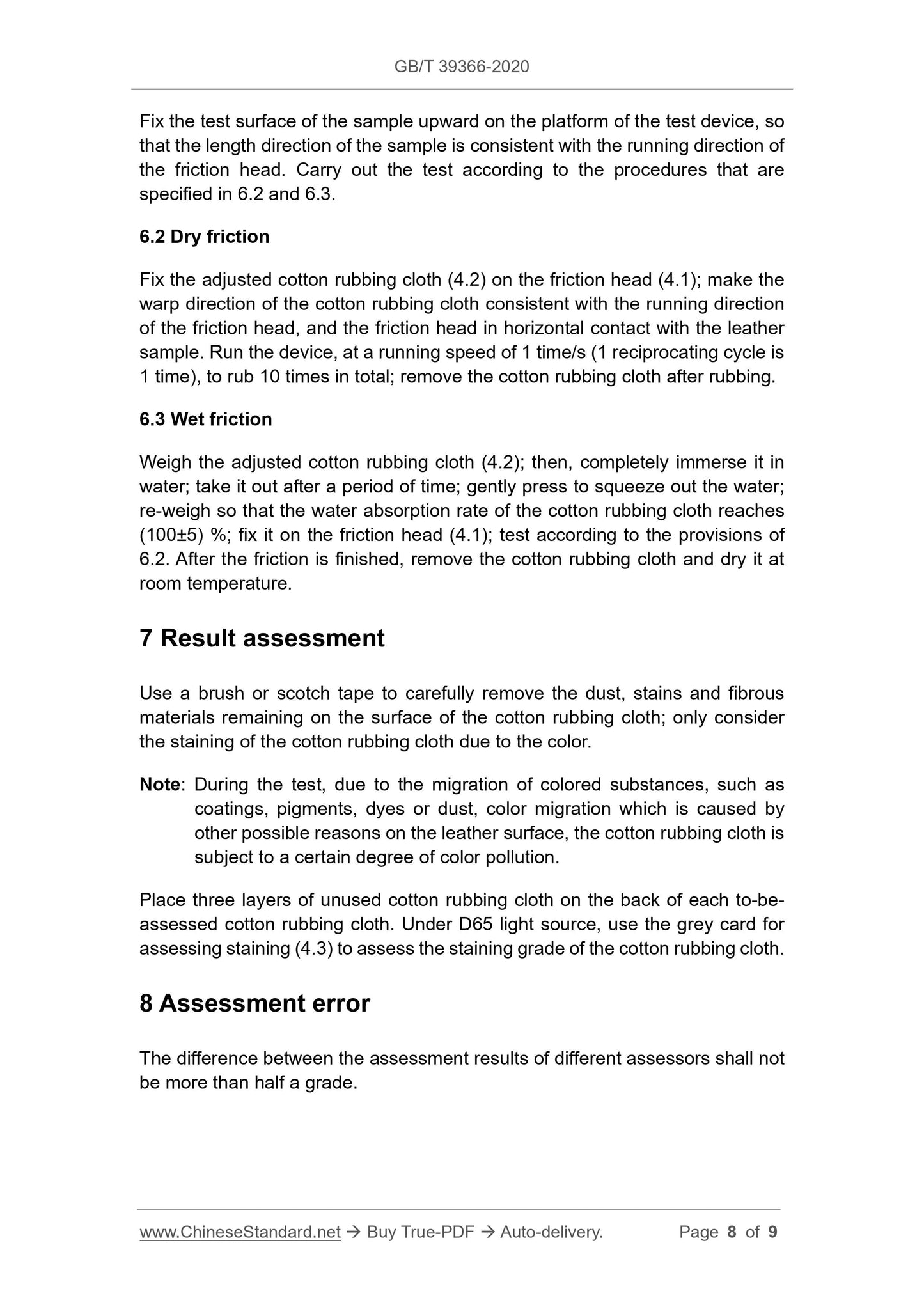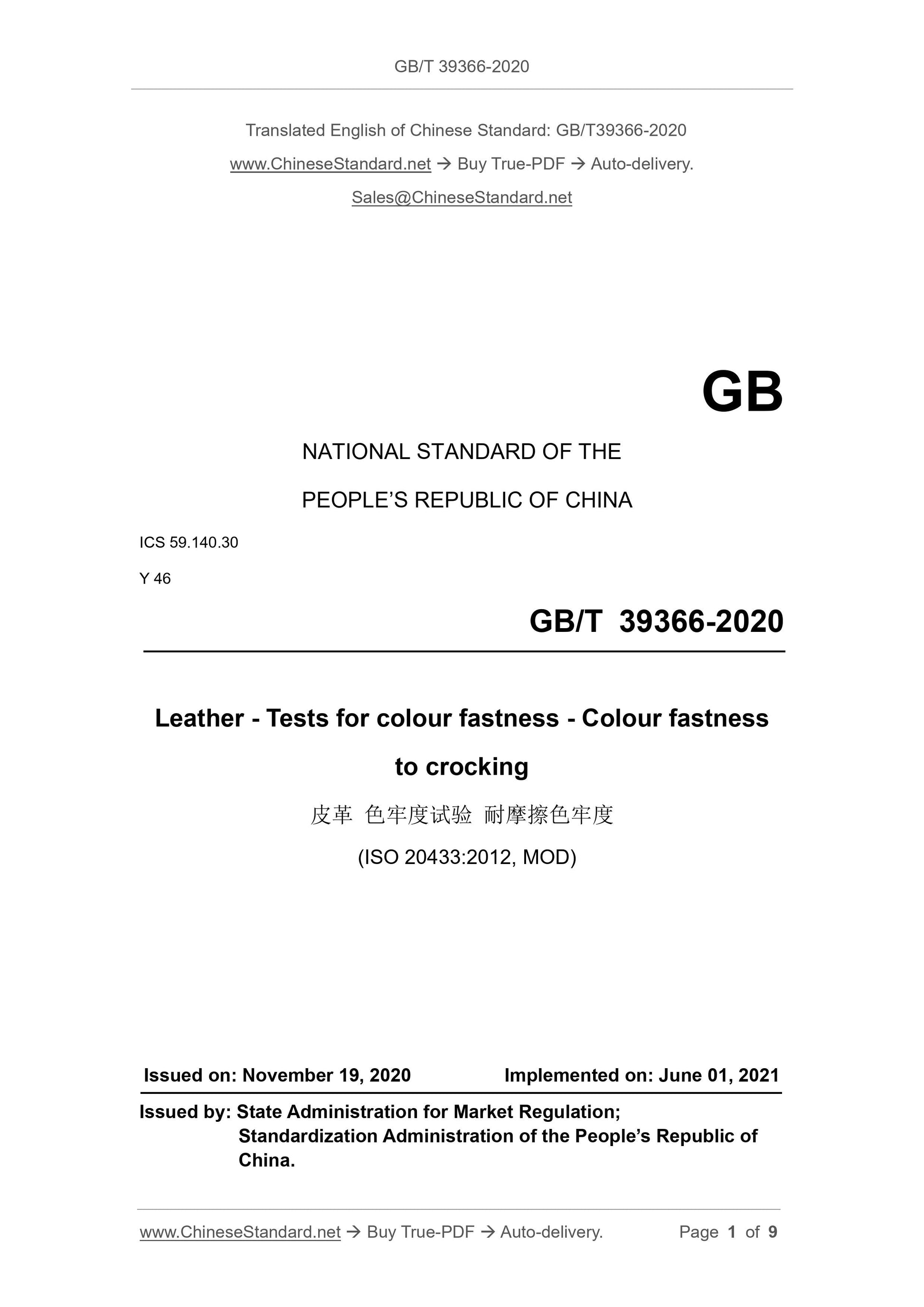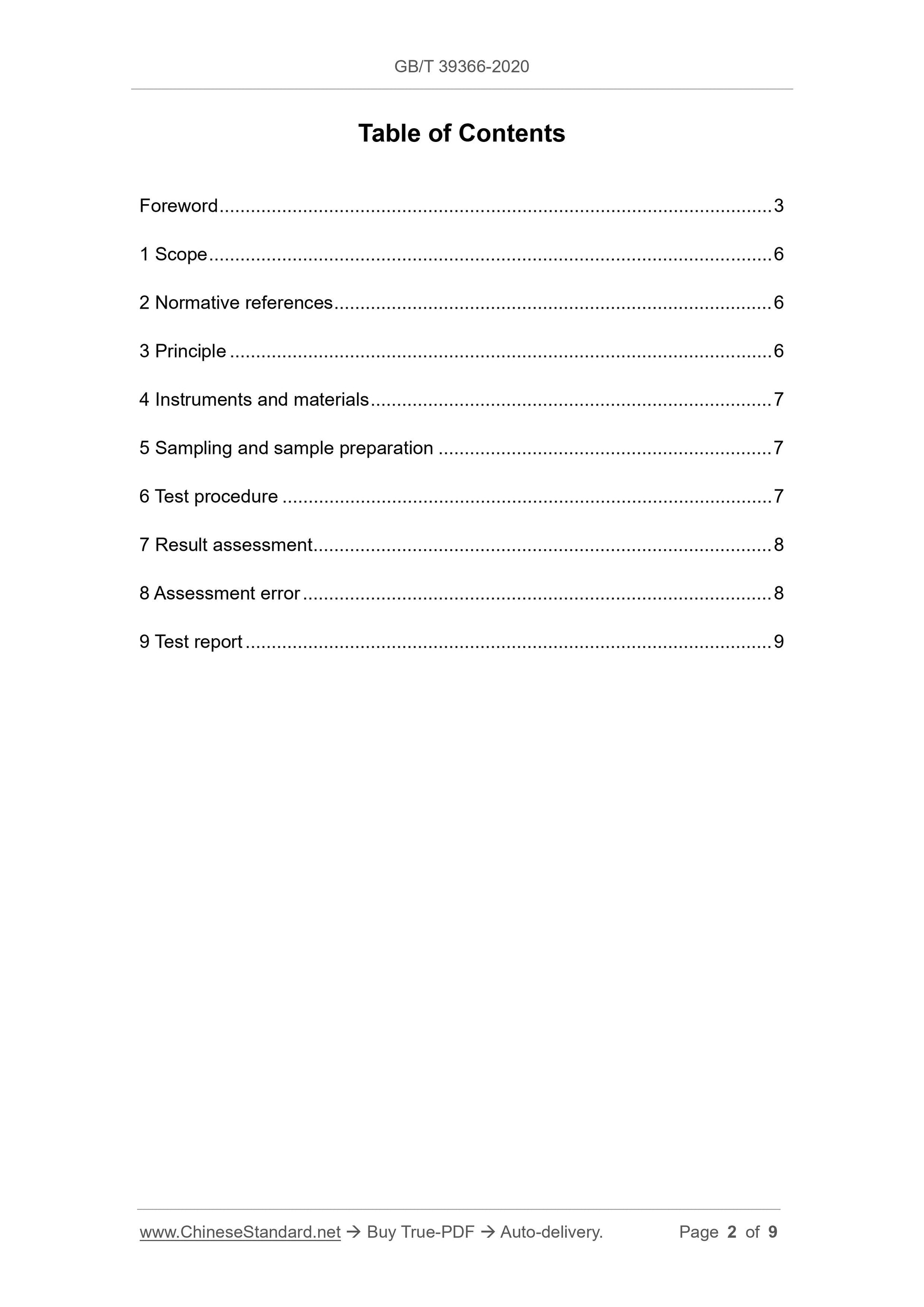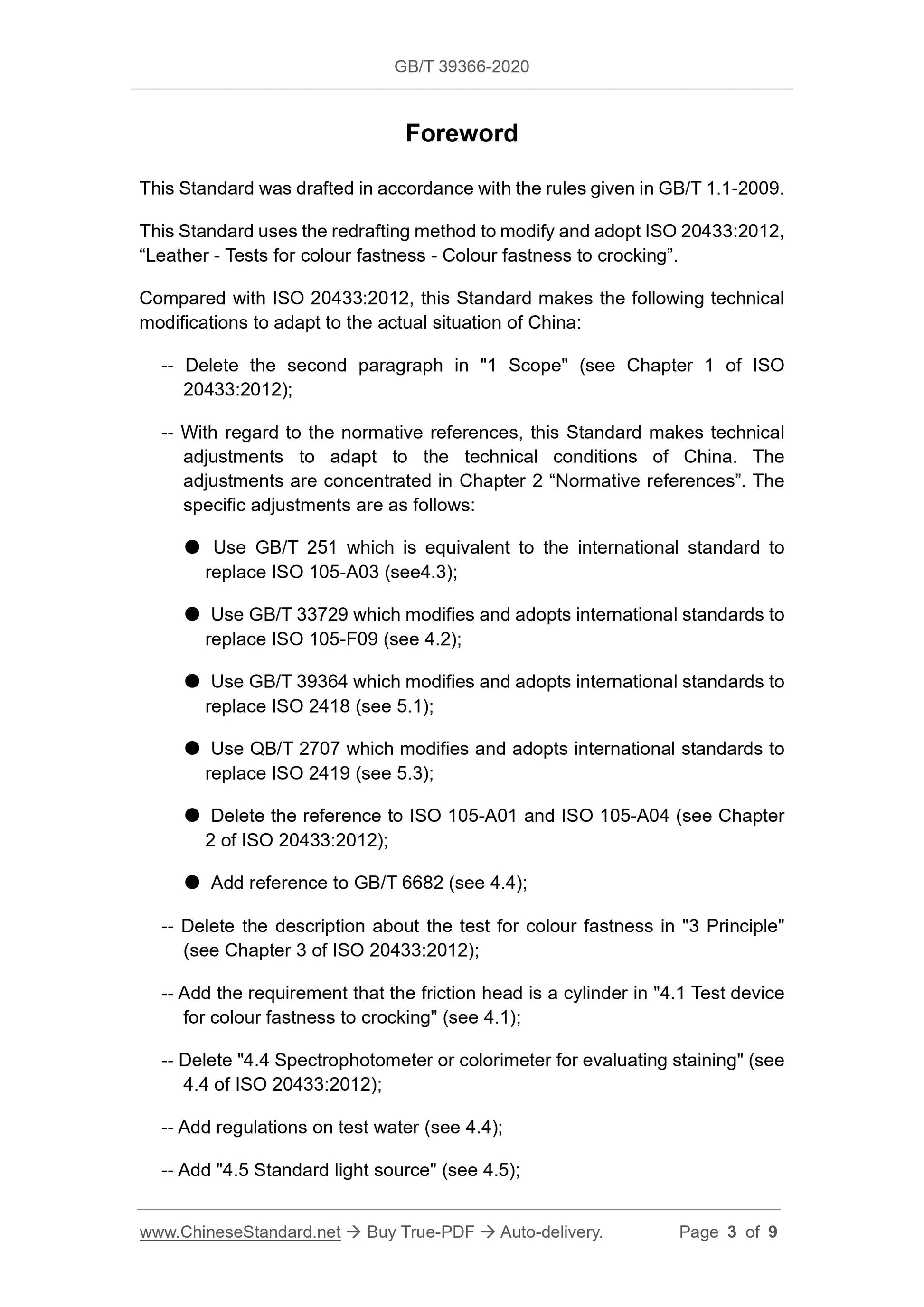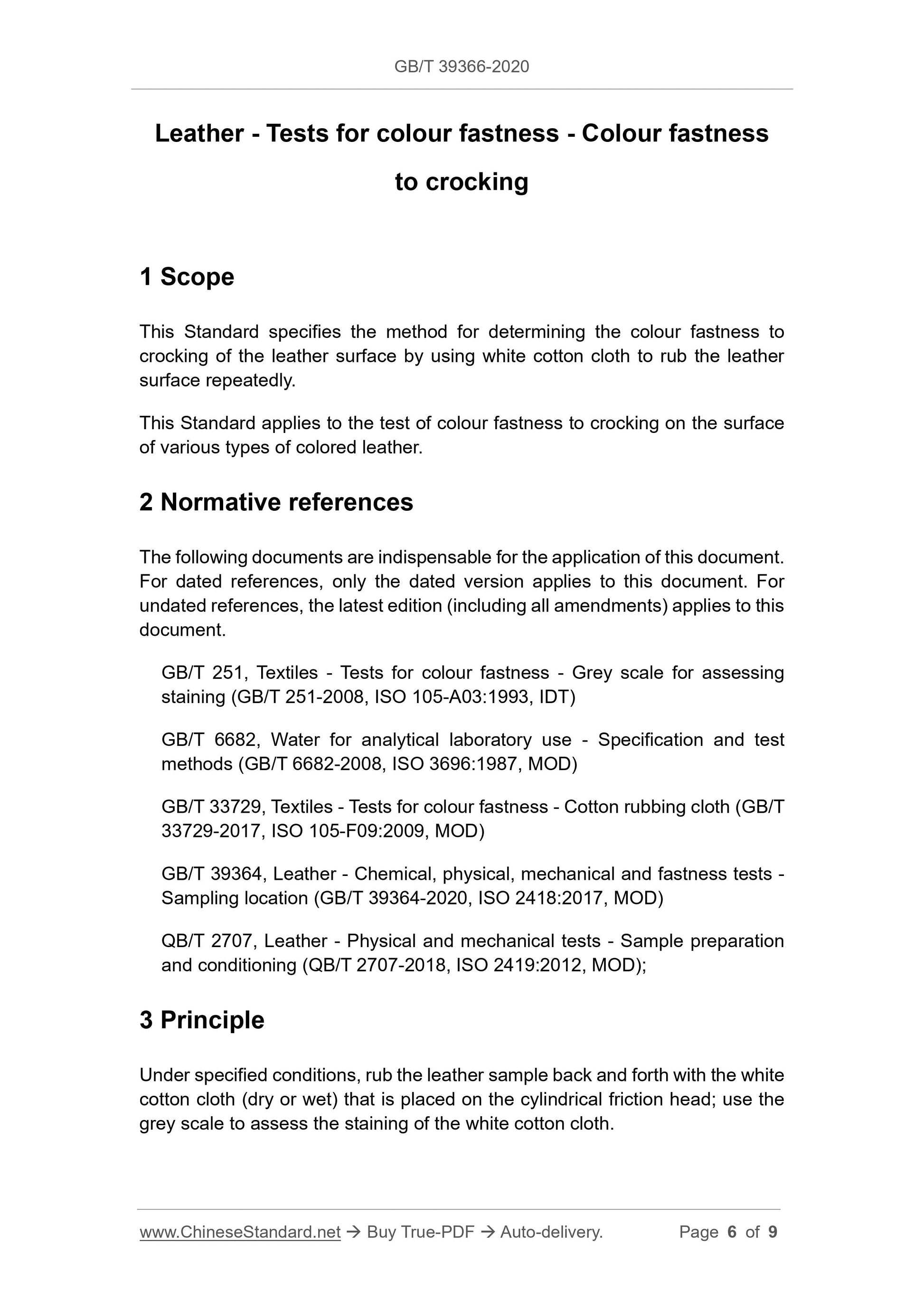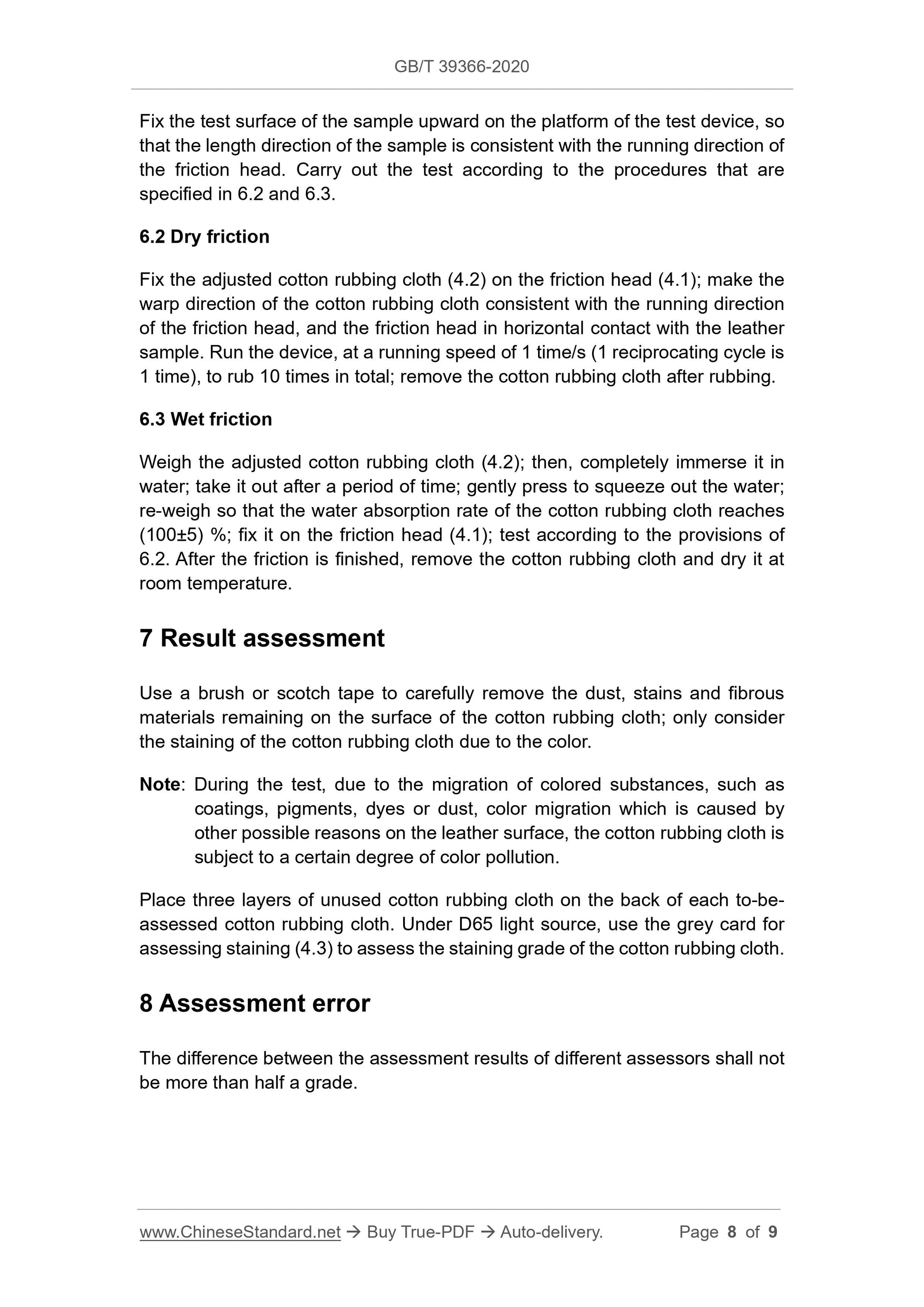1
/
of
5
www.ChineseStandard.us -- Field Test Asia Pte. Ltd.
GB/T 39366-2020 English PDF (GB/T39366-2020)
GB/T 39366-2020 English PDF (GB/T39366-2020)
Regular price
$105.00
Regular price
Sale price
$105.00
Unit price
/
per
Shipping calculated at checkout.
Couldn't load pickup availability
GB/T 39366-2020: Leather - Tests for colour fastness - Colour fastness to crocking
Delivery: 9 seconds. Download (and Email) true-PDF + Invoice.Get Quotation: Click GB/T 39366-2020 (Self-service in 1-minute)
Newer / historical versions: GB/T 39366-2020
Preview True-PDF
Scope
This Standard specifies the method for determining the colour fastness tocrocking of the leather surface by using white cotton cloth to rub the leather
surface repeatedly.
This Standard applies to the test of colour fastness to crocking on the surface
of various types of colored leather.
Basic Data
| Standard ID | GB/T 39366-2020 (GB/T39366-2020) |
| Description (Translated English) | Leather - Tests for colour fastness - Colour fastness to crocking |
| Sector / Industry | National Standard (Recommended) |
| Classification of Chinese Standard | Y46 |
| Classification of International Standard | 59.140.30 |
| Word Count Estimation | 6,634 |
| Date of Issue | 2020-11-19 |
| Date of Implementation | 2021-06-01 |
| Regulation (derived from) | National Standard Announcement No. 26 of 2020 |
| Issuing agency(ies) | State Administration for Market Regulation, China National Standardization Administration |
Share
